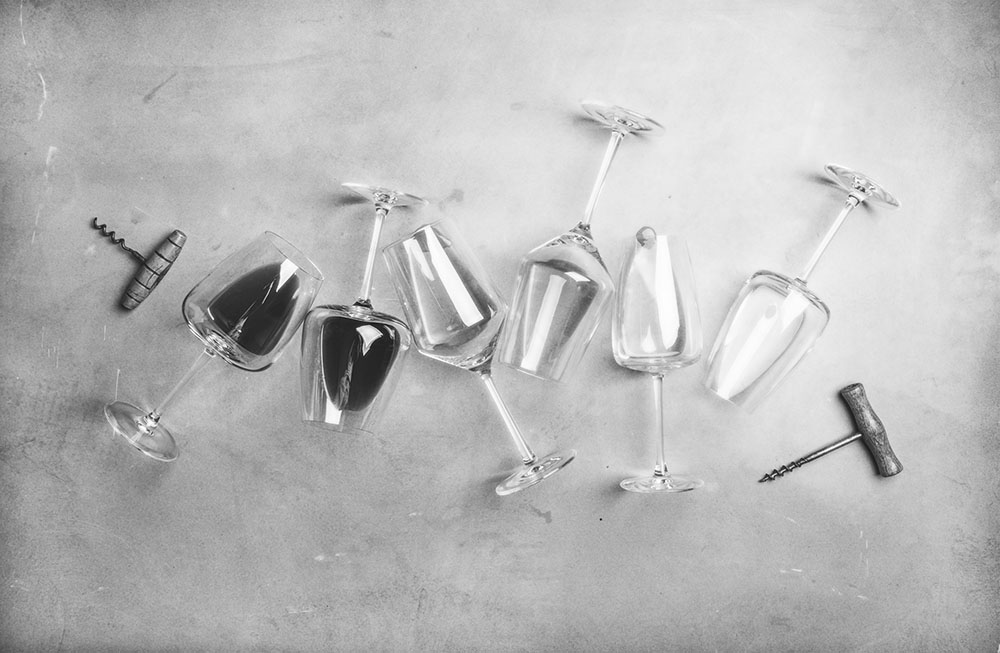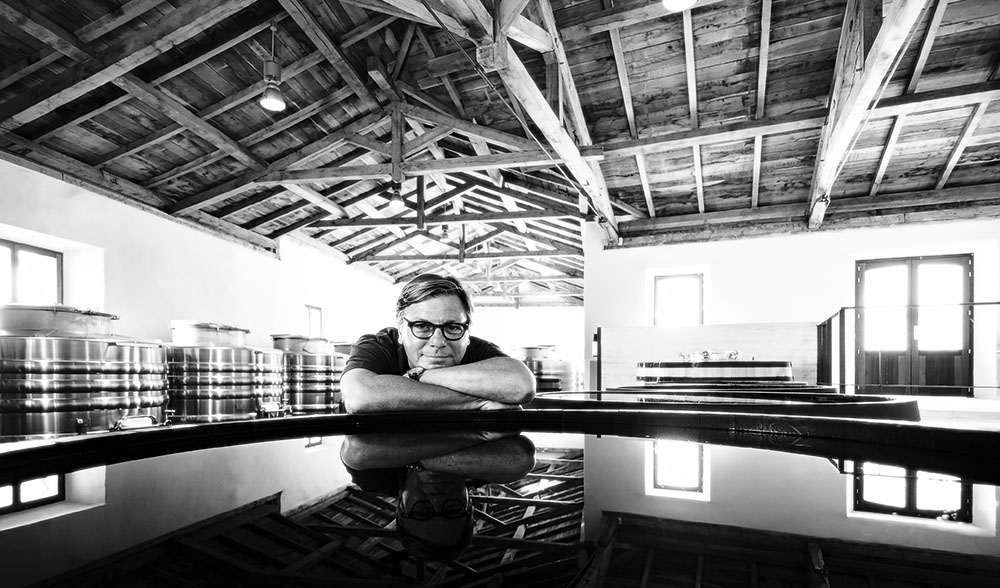
Look to the Duero River for wines that deliver
By Konrad Ejbich
The most famous wine of Spain is, unquestionably, Rioja. We all know it. Crianza, Reserva, Gran Reserva. Everyday wine, Sunday-dinner wine, special-occasion wine. Classic red wines, vinified the same way for more than 150 years.
One grape, 100-year-old vines, 1,000 terrestrial expressions. Ribera del Duero is the wine lover’s dream region.
When the phylloxera vastatrix infestation began to devastate French vineyards in the mid-1860s, many Bordeaux winemakers fled to the nearest unaffected region — some across the Pyrenees into Spain, stopping in Rioja in the Ebro river basin. Although a strong wine industry had already existed there since the Middle Ages, Bordeaux winemakers brought with them modern techniques of quality control that soon became the standard, and which have been a tradition for the past 100 years.
But had those fellows pushed just a few more kilometres beyond the next mountain range — the Picos de Urbión — they would have come upon the headwaters of the Rio Duero. Here begins the river’s roughly 900-kilometre course to the Atlantic, across the massive Iberian plateau and through a number of vast and arid wine-growing regions, starting with Ribera del Duero, through Rueda, Toro, Tierra del Vino de Zamora and Arribes, before ultimately draining into Portugal, where it is called the Douro as it enters the famous port wine zone.
The closest region to the river’s source is Ribera del Duero, which means “banks of the river Duero,” a sprawling region situated 160 kilometres due north of Madrid or, as our lead-footed van driver half-joked, “only an hour away.”
This is by no means an emerging region. Grapes have been cultivated here since pre-Roman times, although for centuries under Muslim occupation, they were only to be eaten as food. In the 12th century, during the Reconquista, when the Moors were slowly being pushed out of the Iberian Peninsula, Benedictine monks from Burgundy came to spread the Christian faith. They also brought with them new knowledge of viticulture and winemaking experience.
Ribera del Duero is a flat, rocky, gently undulating terrain, averaging 800 metres above sea level, with peaks as high as 1,050 metres. At such a high altitude, the diurnal temperature difference is wild, with scorching summer temperatures peaking at 44˚C, and nights dipping to 12˚C. Winter lows can drop to -20˚C.
Perhaps that’s why the Tempranillo grape, known locally as Tinto Fino or Tinto del País, is such a natural here. It adapts well to the extreme temperatures of the region and needs no mixing with other varieties to produce an exciting, balanced wine. Some producers do blend in small amounts of other varieties, such a Cabernet Sauvignon, Merlot, Malbec or, most commonly, Garnacha Tinta, a.k.a. Grenache Noir.
The official DO Ribera del Duero encompasses 115 kilometres of the river’s meandering path and 10 to 20 kilometres of width on either side. The main east–west highway (N-122) cuts through the region but visitors would be wise to slow down for the dozens of tiny towns and villages along the way. It’s revealing to see how quickly micro-climates change and nuances appear in soil composition from town to town and from valley to hillside.
Long before the region was officially granted DO status in 1982, there was Vega Sicilia. The famous winery was founded in 1864 by upstart winemaker Don Eloy Lecanda y Chaves, who trained in Bordeaux and brought Cabernet Sauvignon, Malbec and Merlot cuttings home to plant alongside Tempranillo. Using the blending techniques he’d learned in France, he created a wine so tough that it was only released after a decade and which could be cellared for many years. The wine was highly lauded by the top-hat set and soon established a new benchmark style for the region.
Ribera del Duero wines have long followed the classifications of Rioja. Crianza are aged one year in barrel and one in bottle prior to release. Reserva must be aged at least one year in oak and released only after three years. Gran Reserva must be aged a minimum of two years in barrel and may only be released at five years of age.

Under local rules, wines can also be labelled Joven or Roble. Joven are young wines often less than a year old with no oak contact. Roble are wines that been aged briefly in oak and require notation on the label as to how many months (mesas) they spent in barrel.
The tight grip on styles began to change in the late 1970s after Peñafiel farmer Alejandro Fernández converted his fields from beets to grapes and established Bodega Tinto Pesquera. Using only the ripest Tempranillo grapes from various parcels, he produced a fresh, bold, fruitier wine style, with great depth and complexity as well as more richness and charm.
Investment in the region has grown enormously over the past few decades, some of it from foreign investment conglomerates, but much from Madrid-based entrepreneurs as well as from wise winery owners from other regions.
Famiglia Torres was an early adopter, buying its first winery outside its Catalan base in 2003, in Fompedraza, south of Peñafiel. To ensure consistent grape supply, the company purchased a nearby hilltop vineyard at 900 metres. The site was so bright and starry at night, Miguel Torres Maczassek, general manager of Bodegas Torres, named it Pago del Cielo, and his new wine, Celeste, after the “heavenly” site.
In recent times, the hottest cult wine is Pingus, produced by the region’s first true “garagiste.” I could never afford the $1,500-plus per bottle that costs in Canada, so I was delighted to taste it at the winery together with founder Danish oenologist Peter Sisseck, and his Russian-born winemaker, Julia Zhdanova.
Since 1990, Sisseck has cherry-picked ancient parcels of bush vine, nurtured them biodynamically, harvested ridiculously low yields and pressed liquid magic from them. The wine is so inky-rich, dense and complex, without any doubt, Pingus 2018 is the finest Spanish wine I have ever tasted. No wonder it has captured the attention of the wine world’s elite spitterati.
Global attention has had an effect. Older wineries and larger cooperatives have upped their game while new wineries are constantly being established. In 2012, Wine Enthusiast Magazine honoured it as Wine Region of the Year.
Today, there are 280 wineries in Ribera del Duero producing wines of depth, concentration, balance, finesse and longevity. They are exceptionally cellar-worthy wines that can no longer be ignored by serious wine aficionados.
Bodega Convento San Francisco Crianza, 2016 ($22)
Solid, dense, powerful wine with dark fruit, thick supple texture and long-lasting, deeply flavoured finish. This delicious Tempranillo blend will make exceptional drinking through 2025.
Bodega Martín Berdugo Reserva, 2010 ($38)
Robust, full-bodied and intensely complex, with glorious aromas of blackberry and plum. Savoury, flavoury and complex with depth, polish and finesse. Winery owner Antonio Diez Martín recommends grilled lamb as the perfect match.
Bodega Tinto Pesquera Crianza, 2016 ($34)
One of the flagship brands of the region. 100% Tempranillo. Fragrant with rich black cherry and plum aromas along with violet and tobacco notes. Excellent concentration, good length and solid, spicy finish.
Bodega Martín Berdugo Crianza, 2013 ($25)
Silky tannins and bright, fresh, dark fruits dance together in this lovely young wine. Generous and supple with delicious vanilla-cocoa complexity and an elegant, oak-touched finish.
Bodegas López Cristóbal Roble, 2017 ($21)
Roble means “oaked,” but for less time than Crianza. So much fruit! Billowing aromas and flavours. Soft edges on a young wine with potent, juvenile red and black fruit, liquorice and fresh-cracked black pepper. Sweet, soft and delightful. Terrific value here.
Bodegas Torres Céleste Crianza, 2016 ($22)
From high-altitude vineyards. Bright garnet-blue with quite an intense nose of wild blackberry and blueberry and a rich, fleshy palate highlighting bold flavours of toast and jam with a side of black coffee. Nice vanilla-oak note with balanced smooth tannins.
Bodegas Torres Céleste Reserva, 2015 ($35)
Crianza squared. Inky garnet-red hue is the first clue to this wine’s density. Concentrated fruit, fresh and dried plum, black cherry with a solid mouthfeel, velvety texture, firm oaky tannins and an impressively long finish. Best at 5 to 8 years, but could go 20 in a good cellar.
Dominio de Pingus, 2018 ($1,500)
OMG! Super-dense inky colour. Luxurious, super-concentrated black fruit nose. Closed, thick, intense and focused. An iron fist in a velvet glove. Very long, very dense aftertaste of fruit, earth, spices and stony minerals with little sense of the well-integrated tannins.
More like this...
- There’s Something About Etna
- Carne en su Jugo
- Aguachile & Tostadas de Maíz
- An Unexpected Eating Guide to North Goa
- Germany Now
- Terroir Domesticated
- Ginger Beef
- Dan Dan Lasagna
- A Local’s Guide to Austin TX
- The Rise of Bottle Shops in Ontario
- Chef Profile: Helen Nguyen
- Pan-Roasted Cabbage
- Crispy Smoked Tofu
- Shifting Perspectives: Is Ageing Wine a Thing of the Past?
- Tasting Climate Change and Thirsty to Know More
